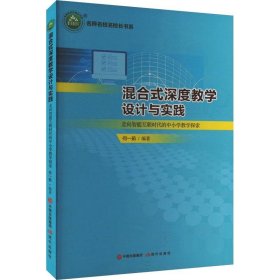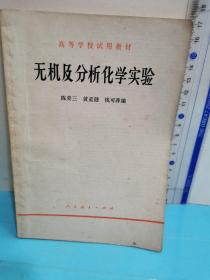
无机及分析化学实验
全新正版未拆封
¥ 21.73 5.2折 ¥ 42 全新
仅1件
山东济宁
认证卖家担保交易快速发货售后保障
作者郭彦 编
出版社南京大学出版社
出版时间2021-04
版次1
装帧平装
上书时间2023-11-15
- 在售商品 暂无
- 平均发货时间 42小时
- 好评率 暂无
- 最新上架
商品详情
- 品相描述:全新
图书标准信息
- 作者 郭彦 编
- 出版社 南京大学出版社
- 出版时间 2021-04
- 版次 1
- ISBN 9787305243578
- 定价 42.00元
- 装帧 平装
- 开本 16开
- 页数 222页
- 字数 325千字
- 【内容简介】
- 目前,许多本科高校不断扩大本科留学生的招生规模,与国外高等院校开展中外合作办学并开设中外合作办学专业,同时部分高校理工科等专业也在尝试开设全英文化学专业类课程。无机及分析化学实验是一门独立的基础实验课程,是学生进入大学后的一门化学实验课程。它是研究元素及其化合物的性质、掌握定量分析方法以及基本操作和相关原理的一门化学实验课程,是培养学生化学实验技能与素质基础的实践环节。本教材是编者根据教学改革实践和教学发展需要,结合多年的教学讲义而编写的。内容包括:绪论、化学实验基本知识、化学实验基本操作、基础实验、提高性实验及设计实验。
- 【目录】
-
1 INTRODUCTION
1.1 Laboratory Rules
1.2 Laboratory Safety
1.3 Laboratory Common Equipments
1.4 Pre-lab Work
1.5 Lab Reports
1.6 Data Analysis
2 EXPERIMENTS
2.1 Calibration of Volumetric C-lassware
2.2 Practice on Acid-base Titration
2.3 Determination of Nitrogen Content in Ammonium Salt (Formaldehy de Method)
2.4 Determination of the Hardness of Water
2.5 Preparation and Calibration of Potassium Permanganate Solution
2.6 Determination of Chloride in Water by Mohr Method
2.7 Iodometric Titration of Vitamin C (Ascorbic Acid)
2.8 Quantitative Determination of Sulfate by Gravimetric Analysis
2.9 Determination of Dissociation Degree and Dissociation Constant of Acetic Acid
2.10 Determination of of Catalyzed Decomposition Rate Constants of Hydrogen Peroxide
2.11 Paper Chromatography Separation and Identification of Metal Cations
2.12 Extraction of Spinach Pigments and Thin Layer Chromatography
2.13 Purification on Raw Salt
2.14 Some Properties on Alkali Metals and Halogens
2.15 The Chemistry of Copper Group Elements and Quantitative Analysis by Titration
2.16 The Chemistry of Nitrogen and Phosphorous
2.17 Identification of Unknown Compounds
2.18 Preparation and Quantitative Analysis of Sodium Thiosulfate
2.19 Preparation and Composition Determination of Ferrous Oxalate
2.20 The Preparation and Analysis of Calcium Iodate Ca(IO3)2
2.21 Preparation and Zinc Content Determination of Zinc Gluconate
2.22 Synthesis and Characterization of Geometrical Isomers of Dichlorobis (ethylenediamine)-Cobalt (I11) Chloride
2.23 Synthesis and Characterization of The Complex his (N,N\'-Disalicylalethylenediamine)-μ-Aquadicobalt (II)
2.24 Spectrophotometric Determination of Iron
2.25 Two-component Analysis of A Phenol/Benzoic Acid Mixture by UV-visible Spectroscopy
2.26 Identification of Benzoic Acid and Aniline by Infrared Spectroscopy
2.27 Determination of Calcium Content in Water Using Atomic Absorption Spectrometry
2.28 Fluorescence Determination of The Content of Hydroxybenzoic Acid Isomers
2.29 Matrix-Assisted Laser Desorption/Ionization (MALDI) Mass Spectrometry (MS) Analysis of Oligosaccharide
2.30 Analysis Methods of Nuclear Magnetic Resonance (NMR) Spectroscopy
2.31 Potentiometric Titration of Phosphoric Acid
2.32 The Redox of Potassium Ferricyanide on Glassy Carbon Electrode
2.33 Analysis of Alcohol in Alcoholic Beverages by Gas Chromatography
2.34 The Separation and Quantification of Food Additives in Drinks Using High Performance Liquid Chromatography
2.35 Thermal behavior and decomposition of copper sulfate pentahydrate
3 Appendix
3.1 Chemical Elements Listed by Atomic Mass
3.2 Methods to Prepare Buffer Solutions
3.3 Standard Electrode Potential
3.4 Solubility Product Constant
3.5 Organic Solvent Polarity
4 References
点击展开
点击收起
相关推荐
— 没有更多了 —






















以下为对购买帮助不大的评价